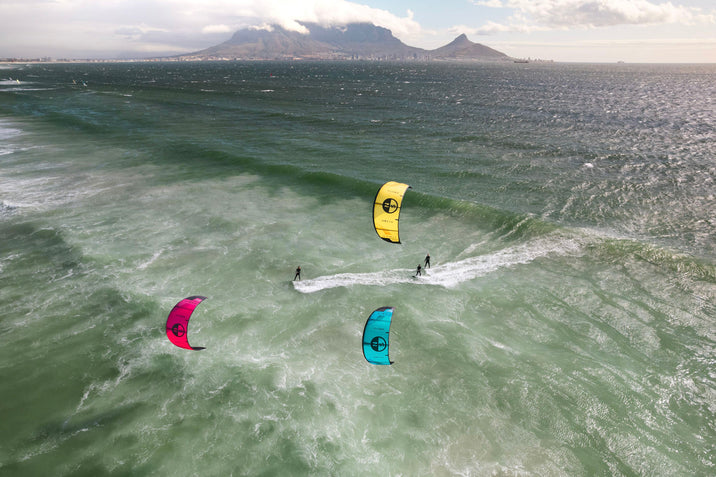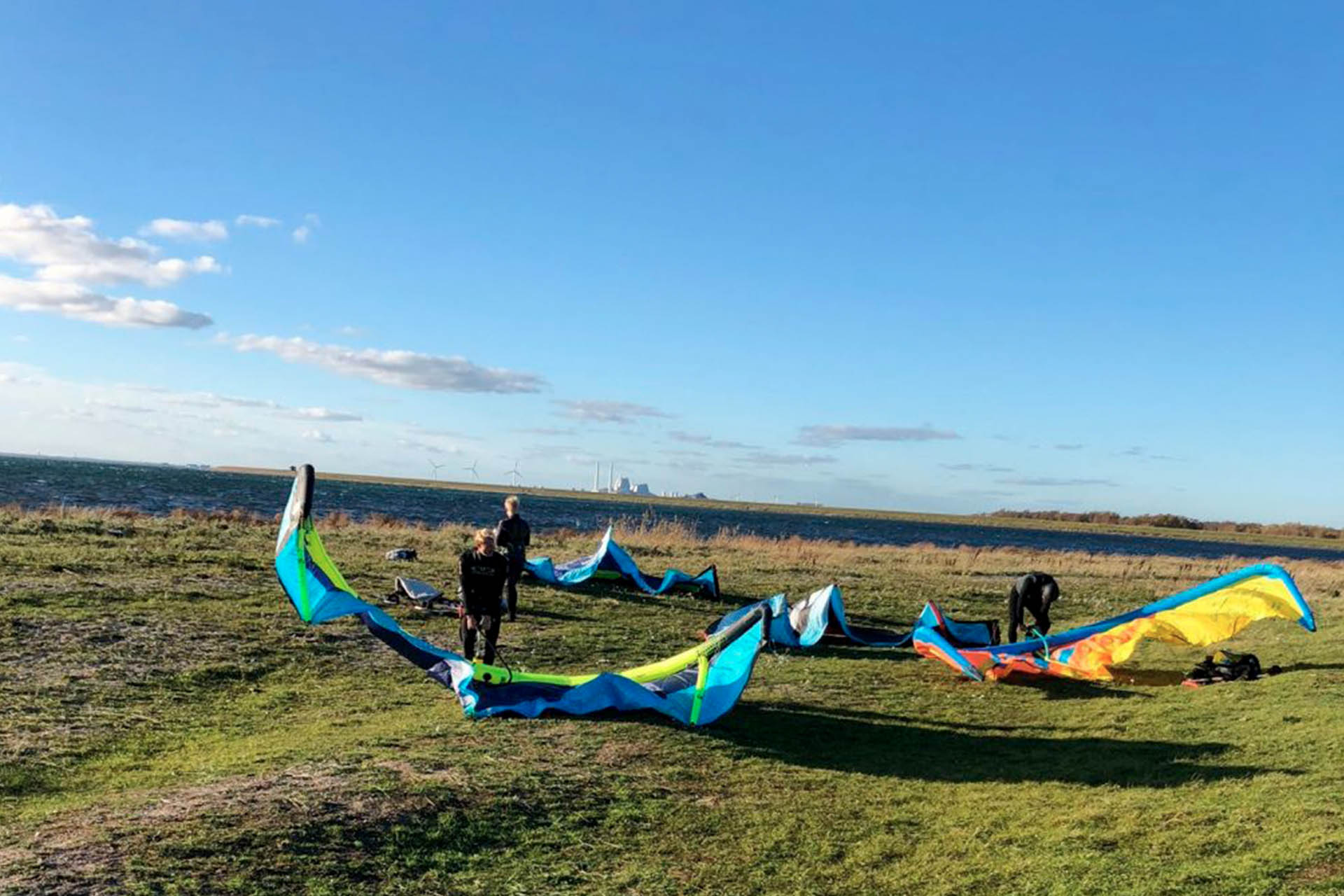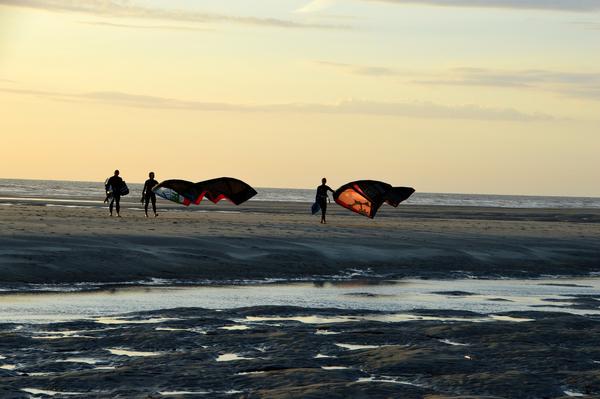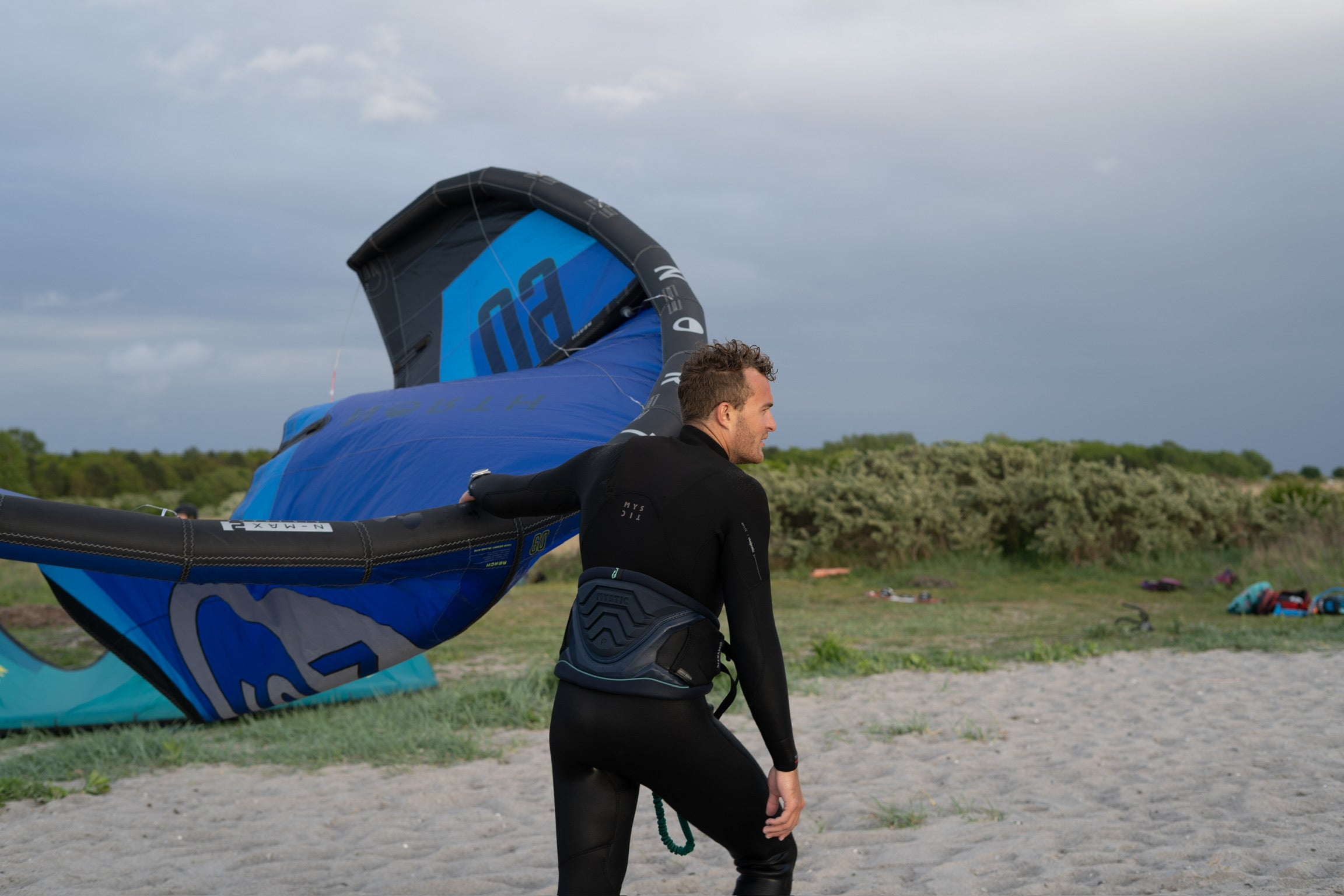When we start a new hobby, it is of course, natural, to make a lot of beginner's mistakes. Which is also part of the process of getting better. But wouldn't it be great if we could just avoid some of these mistakes? It could save us a lot of frustration and time. Tobias Mårtensson is an approved kitesurf instructor at Frozen Palm Tree. Here he gives his take on 12 mistakes that beginners often make and how to avoid them.
Did you find this blog post helpful? Please like and share it with your friends.

You don't ask the locals about the kite spot or what the rules are on the beach
When you can kitesurf on your own you might want to try some new spots or you might want to go abroad and try kitesurfing, which is highly recommended! But there can be a big difference between different kitespots, so the rules that apply to where you learned to kitesurf with your instructor. They might be different at another kitespot. Therefore, you should always ask some of the local kitesurfers on the spot about what you should be aware of. It would be a shame to kitesurf in an area where kitesurfing is prohibited. Or find yourself in a dangerous situation because you didn't ask what you should be aware of. So always remember to ask the local kite school or some of the local kite surfers in the area.
You try kitesurfing when the weather conditions are not for it
The weather conditions are of course the most important thing when you go kitesurfing. If there is no wind, then you cannot kitesurf. If the wind is at storm level, I would also advise against going out and kitesurfing, so stay indoors where it is safe! Unfortunately, we cannot control the weather. Therefore, you should make a thorough assessment of the weather forecast, feel free to check several different weather forecasts before you go out and kitesurf. It will be sad, having gone out on the kite spot and having set up all your gear. Then, to see dark clouds on the way - which will mean that you have to pack up and go back home. But you'd better be on the safe side, you don't want to be caught out on the water should a storm break out. Kitesurfing in the rain isn't really a problem as long as it's not stormy. Since the strong gusts of wind will make it difficult to control the kite in different situations, for example when you have to land or have launched your kite. Therefore, check the weather forecast before going out to surf. Then you also get a good experience.
You kitesurf alone
Although you can kitesurf on your own, you should not go out alone as a beginner. It is both more fun to surf with friends, but it is also much safer, as you can help each other if something goes wrong. If you go to a new kitesurf spot and there is no one else on the water, then the weather conditions are not as they should be, otherwise you are up early (respect to you, of course, for being purposeful)

You're not wearing a helmet
Some beginners think they don't need a helmet after learning to kitesurf on their own. Some even think they look silly with a helmet on. If that's the reason, buy a home that you think looks good on you.
You buy a C-kite
There are quite a few different kites in the sport, which can make it confusing for beginners at first. Which kite should you buy? There are bow-kites, hybrid kites and C-kites. In this video, Rasmus reviews everything you should know about the different kites and what the difference between them is.
You don't know the international kite signals
As a beginner, it will help to know the different kite signals. Because when you're on the water, you can't expect others to hear you because of the wind. Instead, learn and use the different kite signals. These 4 kite signals are the most important to know.
- Thumbs up: I'm ready to launch my kite - use the signal when you're ready to launch your kite.
- A flat palm towards the helper/launcher: Use this signal to show that you are not ready to launch and something is wrong.
- Two strokes on the head: I want to land my kite - use this signal to tell others around you that you want to land your kite.
- Wave your arms above your head, repeatedly: I need help - use this signal if you are in distress and need help.
You are holding the (kite) bar incorrectly
When you start kitesurfing, you just want to be on the water. We all want that! But getting the basics down is important and will save you a lot of frustration in the future. Therefore, it is important to know how to hold your kitebar correctly. Because the way you hold your bar helps determine how much bar and kite control you have. When holding your kite bar, your hands must be close together and each hand must be on the correct side (left hand on the left side of the bar and right hand on the right side of the bar). Some try to get their grips crossed, which is not practical (and can become a safety issue). If you forget how to hold the bar correctly, ask your instructor, or watch the instructional videos you got from your kite school (if you got any), or watch videos online - there are plenty!
For aggressive kite steering
"Less is more" is an expression you can write behind your ear in terms of how you control your kite. When you have set up your kite optimally, it should take a few centimeters of movement with the bar to control the kite. (Small movements are enough to make the kite move). The kite needs time to react to your movements, so you should take that into account instead of moving the bar aggressively. Because too aggressive steering can destroy the flow of your kite and mean you lose control of it - especially in light winds.

You water launch too close to land
You can now water start - well done! A water start is one of the basic things a beginner must learn during his kite course. Be sure, however, that when you have to practice your water start, that you have a good distance from land, otherwise your fins will scrape against the bottom when you start in the water and you will do a faceplant yourself! Which neither looks nor feels good!
You don't check if your lines are tangled
You have set up your kite and you are ready to launch and get on the water. But did you remember to check your lines an extra time? Check that your bridles look correct before connecting your lines. Never put your lines on without checking that everything is in order and please double check them!
You push the kite up when you need to help launch
When you have to help launch you might want to push the kite into the air. You should never do that. When you push the kite up, you destroy the ideal position for the kite and it will often fall to the ground. Instead, wait for you to get the signal "I'm ready to launch" and let go of the kite - it's both simple and easy!
Roll up your lines if you take a break
Imagine you are walking along the beach and suddenly you fall. You discover that someone has forgotten to roll up their lines and they are spread out all over the place, how annoying isn't that?! Often it will be beginners who have forgotten to roll up their line if they take a break. So don't be one of them, roll up your lines after use and everyone on the beach will thank you.

Conclusion
That was the list of 12 beginner mistakes. We have uncovered everything from technical problems such as aggressive kite steering and wrong grip on the bar. For practical problems such as not wearing a helmet and forgetting to ask the locals about various rules at new kite spots. Now you are aware of these mistakes and you should be able to avoid them (at least some of them) From this list, what mistakes are you making? and how will you remember not to repeat them?
Write a comment!
Look at the water!
Did you find this blog post helpful? Please like and share it with your friends.





